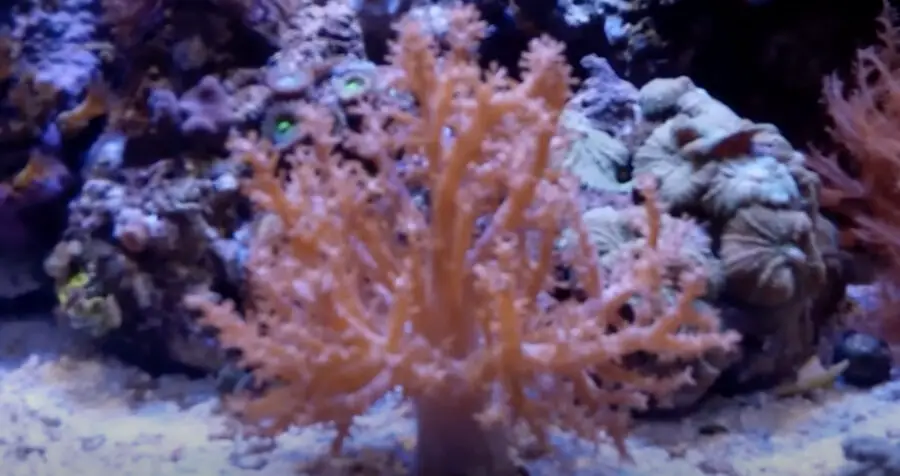The Kenya Tree Coral is among the beautiful additions you can make to an aquarium. Unfortunately, it is not without its issues and headaches.
We look into Kenya Tree Coral not opening in the reef tank and how to solve it.
Why Is My Kenya Tree Coral Not Opening
If there is an error in the opening of your Kenya tree coral, it is due to something troubling it. This can occur for multiple reasons.
It might be due to an adjacent coral stinging it, or an overzealous fish, such as a Clownfish, may be pestering it. It might be that the coral doesn’t like the location at which it’s situated or that the water conditions are unfavorable.

Consider giving your corals a little more time if they aren’t opening up. If they’ve been adequately accommodated, they should open when ready.
Nevertheless, the problem can result in complications, such as minor errors during the overture phase.
Several causes can result in your corals’ failure to open. The simplest is also the most popular; they may take more time. Be patient and wait for them to open.
How Long and When Should Kenya Tree Coral Open
Most reef aquarium owners are supposed to notice signs of opening within only a few hours. However, some different species can take up to weeks to open.
Some corals can remain closed for several weeks. Some aquarists say it can take up to three weeks for corals like Hammer Coral (Euphyllia ancora) to open fully.
The crucial thing is not to lose up on comprehensive care after seven days have passed and nothing has transpired in the tank. Give them the time and attention they require; everything should be fine.
Required Water Conditions For Kenya Tree Coral
Kenya tree corals can tolerate a wide range of water parameters if adequately lit. Remember, they prefer a little dirt containing dissolved nutrients and organic garbage.
It is recommended that mature biological filtration and some fish introduce more nitrogenous waste into the water for the Kenya tree coral to feed on.
It helps to examine the native environment of the specific species of Kenya tree coral because some differences exist between those from the Red Sea and those from the more expansive Indo-Pacific Ocean.
This factor then causes them to have different traits and environmental requirements. We look at water parameters for Kenya tree coral. See below:
- Ammonia: zero
- Calcium: 350 to 450 ppm
- Gravity: 1.023 to 1.025
- Hardness: 8 to 12 dKH
- Magnesium: 1200 to 1350 ppm
- Nitrates: 0 to 10 ppm
- Nitrites: zero
- pH: 8.0 to 8.2
- Phosphorous: near zero
- Temperature: 72°F to 82°F

How Much Light Does Kenya Tree Coral Need
It would be best to be careful with how much light you expose to the Kenya Tree Coral. Medium lighting is okay and will keep the coral in a good state.
As for specifics regarding the light measure, lights in saltwater reef tanks holding corals should be turned on for about 8-10 hours per day. Corals require light to create food. Zooxanthellae, algae in its tissue, converts light into energy; without adequate light, the coral would perish.
It would help if you also kept an eye out for pale coral rather than bleached. A coral that turns pale rapidly after adjusting the lighting is usually caused by too much light. A coral that moves slowly may be due to a lack of light, a high or low temperature, or a lack of nutrition.
Do You Need To Feed Kenya Tree Coral
Feeding is required for Kenya tree corals, although not in the same way as other corals. They are more hungry than most corals and eat instead of photosynthesis. As a result, paying attention to, monitoring, and researching their eating habits is vital.
They have zooxanthellae, which are symbiotic algae that feed by photosynthesis. They gain nutrients, however, by absorbing them from the water and collecting phytoplankton. They are fascinated by floating garbage, dissolved organics, and anything else that occurs naturally in a tank.
Why Is My Kenya Tree Coral Laying Down
Unsuspectingly, your Kenya Tree Coral laying down may need a water change. Many lovers of this aquarium display find water change as a potential solution to having the feature back up.
Water flow also plays a significant role in getting it back on its feet. You should try moving the coral to an area with lesser water flow and see how it performs.
If you perform these measures and still find your Kenya Tree Coral laying down, you can perform an extensive tank revamp to solve the problem.
Where Should You Place Kenya Tree Coral
You can mount the Kenya Tree Coral with IC gel glue or putty on an exposed rock or ledge in the middle third of the aquarium, where it will receive moderate currents and moderate to high lighting.
Allow a few inches around them, and remember that they will frequently begin to shadow corals around them as they grow bigger.
However, that’s not the only choice, as there are multiple approaches to placing the Kenya Tree Coral. It also works to put the Tree Coral near the tank’s bottom, in an area with the moderate-high flow and moderate lighting.
They don’t require exceptionally high levels of either; thus, an optimal location is likely towards the periphery of the light halo from your LEDs.
Conclusion
We hope you understand better the nature of the Kenya Tree Coral and how they may fare in certain temperatures. You should not worry if they don’t perform well.
Instead, ensure you make the necessary moves to keep your aquarium healthy, flowing, and conducive for the Kenya Tree Coral.
Table of Contents
